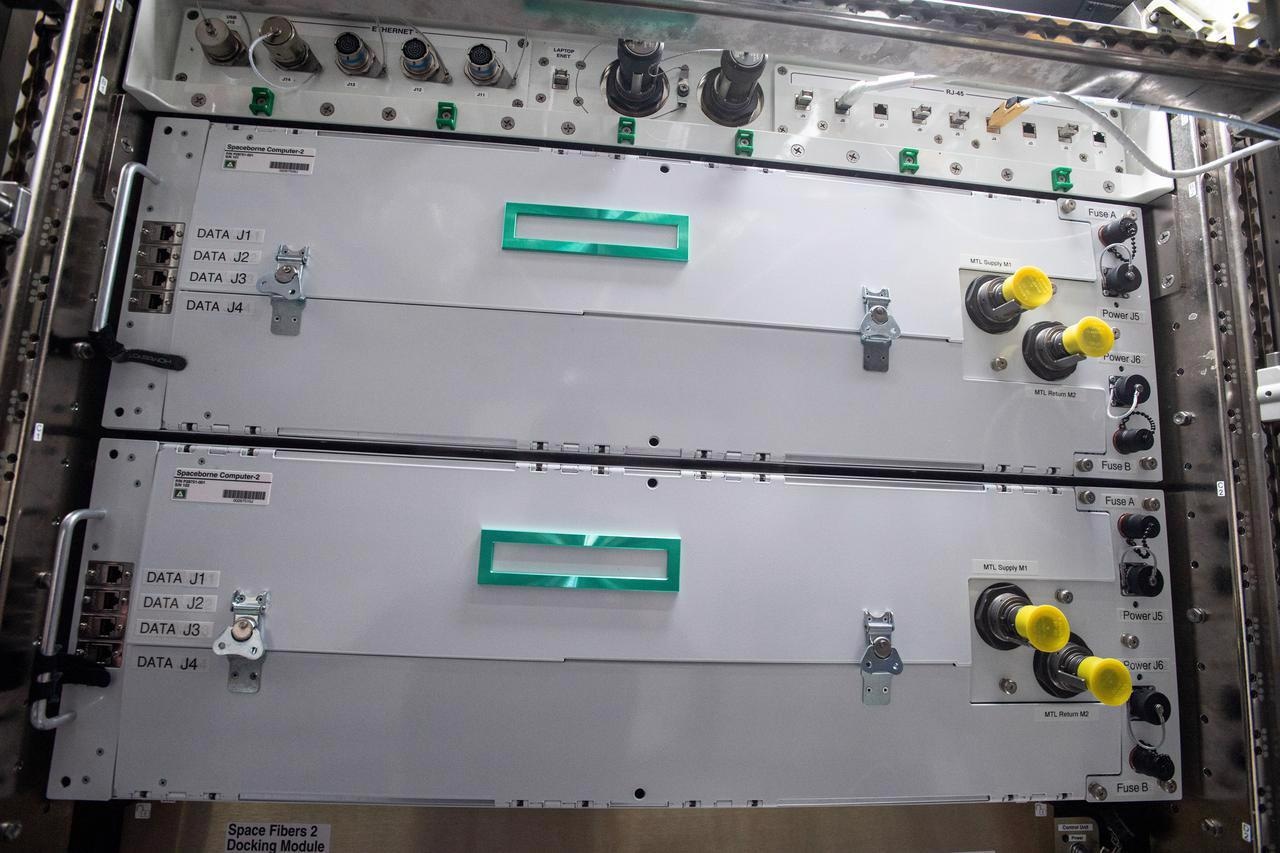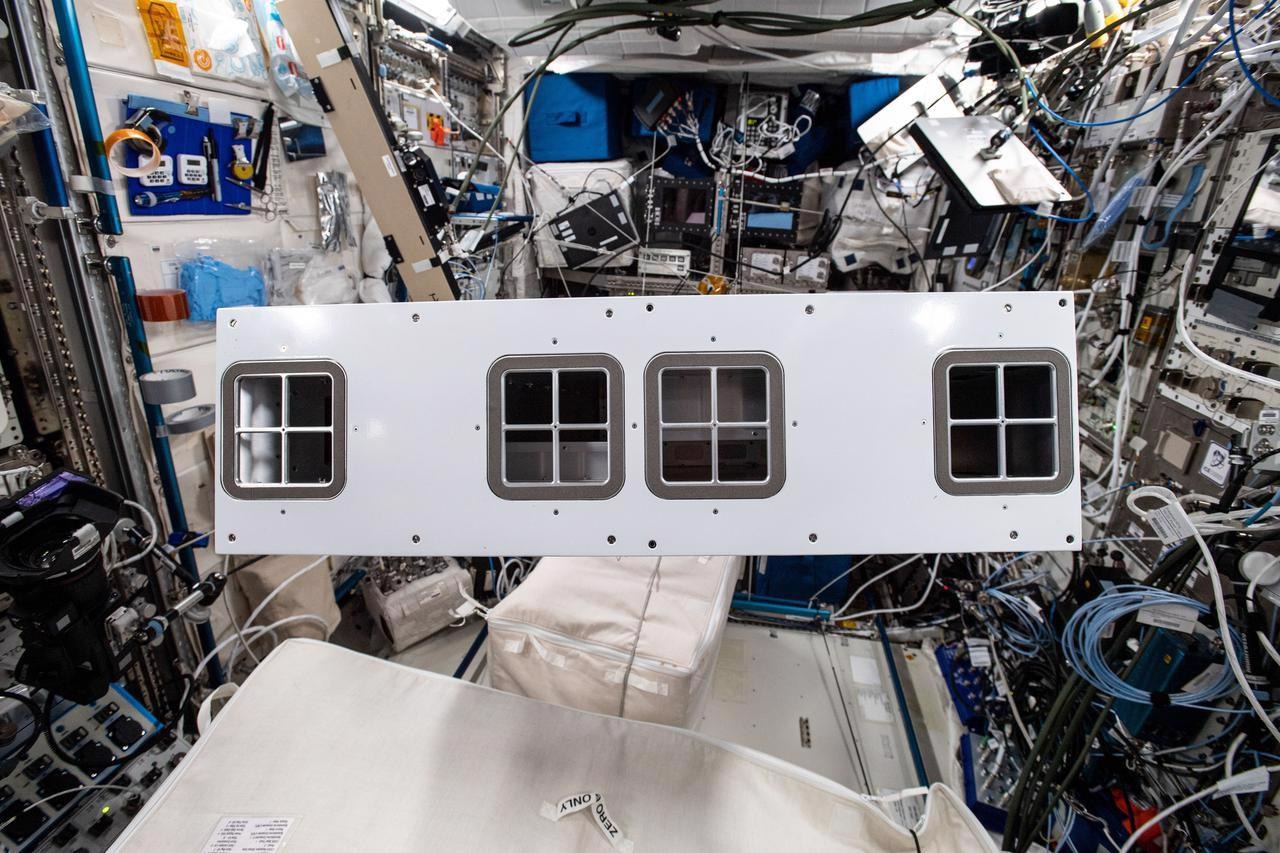The future of space exploration will require computers that allow astronauts to conduct in-situ information and data processing with machines that can withstand harsh environments.

A view of the Spaceborne Computer-2 High Performance Commercial-Off-The-Shelf (COTS) Computer System on the ISS. Image Credit: Michael Hopkins/NASA
The next phase of space exploration is all about sustainability and increasing the duration of space missions, working towards long-term operations on the moon. From here, the goal of space agencies like NASA is to use this as a stepping stone to the human exploration of Mars and beyond.
However, if longer space missions or even human settlements beyond the surface of Earth are ever to become a reality, then astronauts will need access to advanced computer technology freely available here on Earth.
Even before these steps in space exploration are made, space missions already underway would benefit greatly from in-situ supercomputers.
Currently, systems in space like those of the International Space Station (ISS) collect information, convert it into data, and then stream that data back to Earth to be processed. This requires a great deal of bandwidth and is time-consuming.
That means it would be highly advantageous to have a supercomputer available on the ISS to allow information to be processed in orbit.
This requires answering several questions about supercomputers and their compatibility with space travel. Primary amongst these: can a non “hardened” computer withstand spaceflight? What are the effects of launch on such a device? What will be the effects of extreme space environments and factors like solar flares, radiation, and cosmic rays on a supercomputer?
Unsurprisingly, work is currently underway to answer these and other questions. The first long-term attempt to do so came in the form of Hewlett Packard Enterprise (HPE) and NASA’s Spaceborne Computer missions.
Spaceborne Computer-1 On The International Space Station
Spaceborne Computer-1 (SBC-1) was an unmodified, commercial, off-the-shelf high-performance computer that was sent to the ISS in 2017.
After traveling to the ISS on a SpaceX Dragon Spacecraft, the SBC-1 stayed aboard the ISS for a period of over one and a half years, or 657 days, returning to Earth in June 2019.
What Research has the Cargo Dragon CRS24 Mission Supported?
While hardened electronics are designed to withstand specific conditions harmful to computers such as exposure to radiation, HPE instead designed the SBC-1 system by considering the consequences of damage. This takes into account what it would take to mitigate this damage and keep the system up and running.
SBC-1’s software monitored the system’s conditions and when it detected changes beyond safety parameters the hardware was put into a safe state or reduced operations until ideal operating parameters were re-established. This safety procedure involved stepping down operations based on the measured threat, first slowing down, then going idle, and finally powering down if necessary.
The logic behind this is it is better to have a slower computer than no computer, and it is better to be powered down for a while than damaged, potentially beyond repair.

Spaceborne Computer-2 aboard the International Space Station (ISS). Image Credit: Michael Hopkins/NASA
Excitingly, the ISS U.S. National Laboratory, which sponsored the SBC-1 mission, revealed that not only had the computer functioned in space but that the project was nearly flawless.
During its time in low-Earth orbit and throughout the course of 53,936 experiments conducted in 9,562 orbits and while dealing with 6,879 South Atlantic Anomaly (SAA) crossings the extreme conditions it experienced around 254 miles above the planet’s surface never caused a single miscalculation or interruption in operations.
Perhaps the most significant single event in the SBC-1 mission occurred in September 2017, when the computer achieved over one trillion calculations per second. Also known as one teraFLOP, this is up to 30 times faster than a conventional laptop
Spaceborne Computer-2: The Next Generation of Space-Based Supercomputer
Following on from the successful SBC-1 mission came the Spaceborne Computer-2 (SBC-2) project. Not only does this follow-on technology incorporate lessons learned from SBC-1, but it also features double the processing power of its predecessor.
In addition to this, SBC-2 also possesses graphical processing units, edge processing technology, and artificial intelligence (AI). The powering on of the system in May 2021 after its arrival at the ISS in February of that year marks the first time a computer system in space has allowed for the use of targeted AI.
One of the first significant tests of the SBC-2 was an experiment that saw it experience a simulated compute failure in its environment. From this event, it was able to rapidly recover the impacted application within just 30 seconds thanks to its installed Serviceguard for Linux.
The SBC-2 will continue to service the ISS and its crew for the next 2 -3 years. Allowing for real-time data processing, HPE says that the SBC-2 will reduce data processing times for the ISS crew from months down to minutes.
While the advantages of the testing of supercomputers in space for exploration beyond Earth are fairly clear, such investigations could also provide benefits here on the surface of the planet.
The demonstrations undertaken by HPE and NASA could lead to more robust computers that could be used in harsh environments on Earth. This could include oil rigs or in mines, or even buildings where transmissions to the outside world are limited.
References and Further Reading
Williamson Smith. A., [2021], “On the Edge of the Edge: Taking Supercomputing to Space,” ISS U.S. National Laboratory. https://www.issnationallab.org/iss360/hpe-supercomputing-return-space/
Fernandez. M., [2017], “HPE’s Spaceborne Computer Successfully Powers Up in Space and Achieves One TeraFLOP,” Hewlett Packard Enterprise. https://www.hpe.com/us/en/newsroom/blog-post/2017/09/hpes-spaceborne-computer-successfully-powers-up-in-space-and-achieves-one-teraflop.html
International Space Station 20th Anniversary HEWLETT PACKARD ENTERPRISE, ISSUU. https://issuu.com/faircountmedia/docs/international_20space_20station_2020_20years_20of_/s/11253565
“Hewlett Packard Enterprise accelerates space exploration with first ever in-space commercial edge computing and artificial intelligence capabilities,” [2021], Hewlett Packard Enterprise. https://www.hpe.com/us/en/newsroom/press-release/2021/02/hewlett-packard-enterprise-accelerates-space-exploration-with-first-ever-in-space-commercial-edge-computing-and-artificial-intelligence-capabilities.html
“Protect critical data environments on Earth with a solution successfully tested in space,” [2021], Hewlett Packard Enterprise. https://community.hpe.com/t5/Servers-Systems-The-Right/Protect-critical-data-environments-on-Earth-with-a-solution/ba-p/7155432
Disclaimer: The views expressed here are those of the author expressed in their private capacity and do not necessarily represent the views of AZoM.com Limited T/A AZoNetwork the owner and operator of this website. This disclaimer forms part of the Terms and conditions of use of this website.